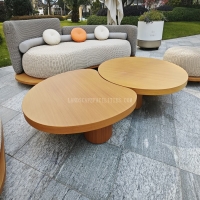Welcome to the website for landscape facilities products and knowledge.
What are the key differences between obsidian and onyx landscape tables?
When it comes to selecting a natural stone landscape table, obsidian and onyx are two stunning options that often captivate buyers. However, these materials have distinct characteristics that set them apart.
Appearance: Obsidian is a volcanic glass known for its deep black color and glossy, reflective surface. It often has sharp edges and a sleek, modern look. Onyx, on the other hand, is a banded variety of chalcedony, featuring translucent layers in shades of white, brown, red, or green. Its unique veining patterns create a luxurious, organic aesthetic.
Durability: Obsidian is extremely hard and brittle, making it resistant to scratches but prone to chipping if struck. Onyx is softer and more porous, requiring regular sealing to prevent stains and etching from acidic substances.
Maintenance: Onyx demands more care due to its porosity, while obsidian’s non-porous surface makes it easier to clean. However, both materials benefit from gentle handling to preserve their beauty.
Light Interaction: Onyx’s translucency allows it to glow when backlit, adding a dramatic effect to landscape designs. Obsidian, being opaque, offers a bold, solid presence without light transmission.
Choosing between obsidian and onyx depends on your design vision and maintenance willingness. Obsidian suits minimalist, modern spaces, while onyx excels in luxurious, artistic settings.
Related search:

Recommendation
Elliptical metal outdoor table with nested design, resembling wood grain, round table